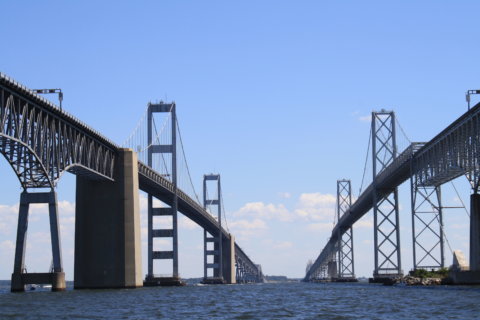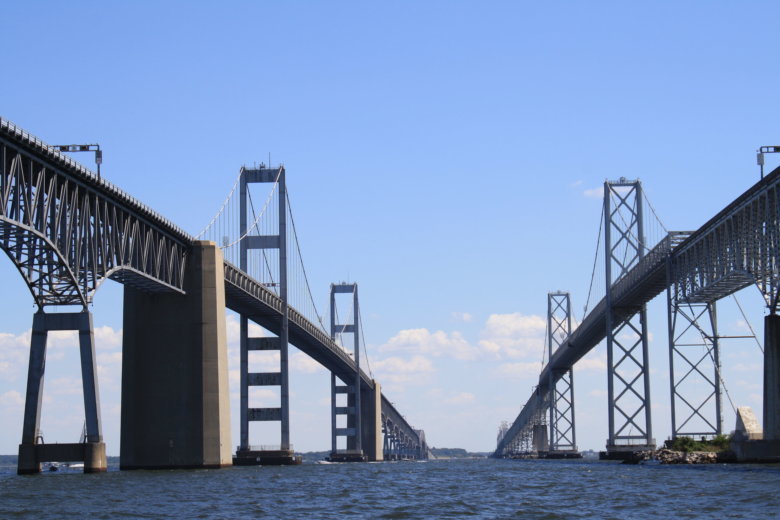
The Chesapeake Bay Bridge’s all-electronic tolling system will go live on May 12, weather permitting, state officials announced Tuesday, fulfilling the state’s goal of making bridge access cashless by this summer.
The permanent cashless tolling system includes three through lanes that will allow traffic to continue at highway speed through collection booths and tie back into existing lanes on the eastbound and westbound spans of the Bay Bridge, the Maryland Transportation Authority said in a news release Tuesday.
New overhead tolling gantries were recently installed above eastbound U.S. Route 50 after Md. Route 8, and are undergoing software testing in their final week before becoming operational. Tolls will be collected through E-ZPass and video toll payment methods.
The new system brings benefits to motorists other than speed, MDTA said, including less engine idling, reduced emissions and decreased congestion. The agency estimated that Bay Bridge users will save a combined 42,000 hours annually by not having to significantly slow to pay their toll.
E-ZPass users will be charged $2.50 from their account, although Maryland offers a discount plan that allows drivers to pay $1.40 per trip for 25 trips, valid for 45 days.
The video toll rate for drivers not using an E-ZPass will start at $4, which increases to $6 starting 30 days after Maryland’s coronavirus state of emergency is lifted. MDTA encourages drivers without an E-ZPass to enroll at ezpassmd.com.
Maryland had already implemented temporary cashless tolling statewide starting March 17 to help toll collectors observe social distancing and limit their interaction with drivers during the coronavirus pandemic.
Last month, a long-term rehabilitation project on the bridge’s westbound span ended a year ahead of schedule due to fair weather and significantly reduced traffic during the emergency.









